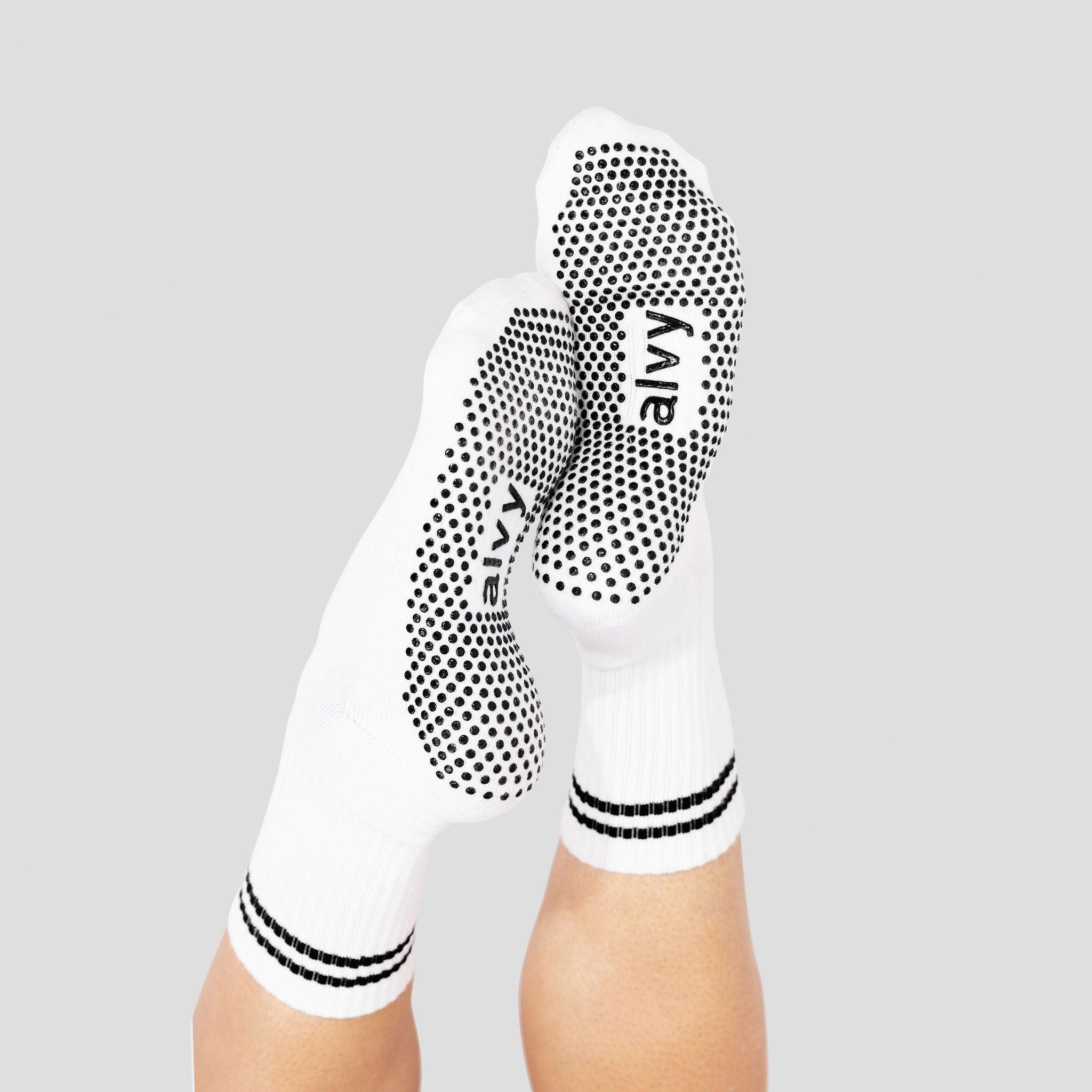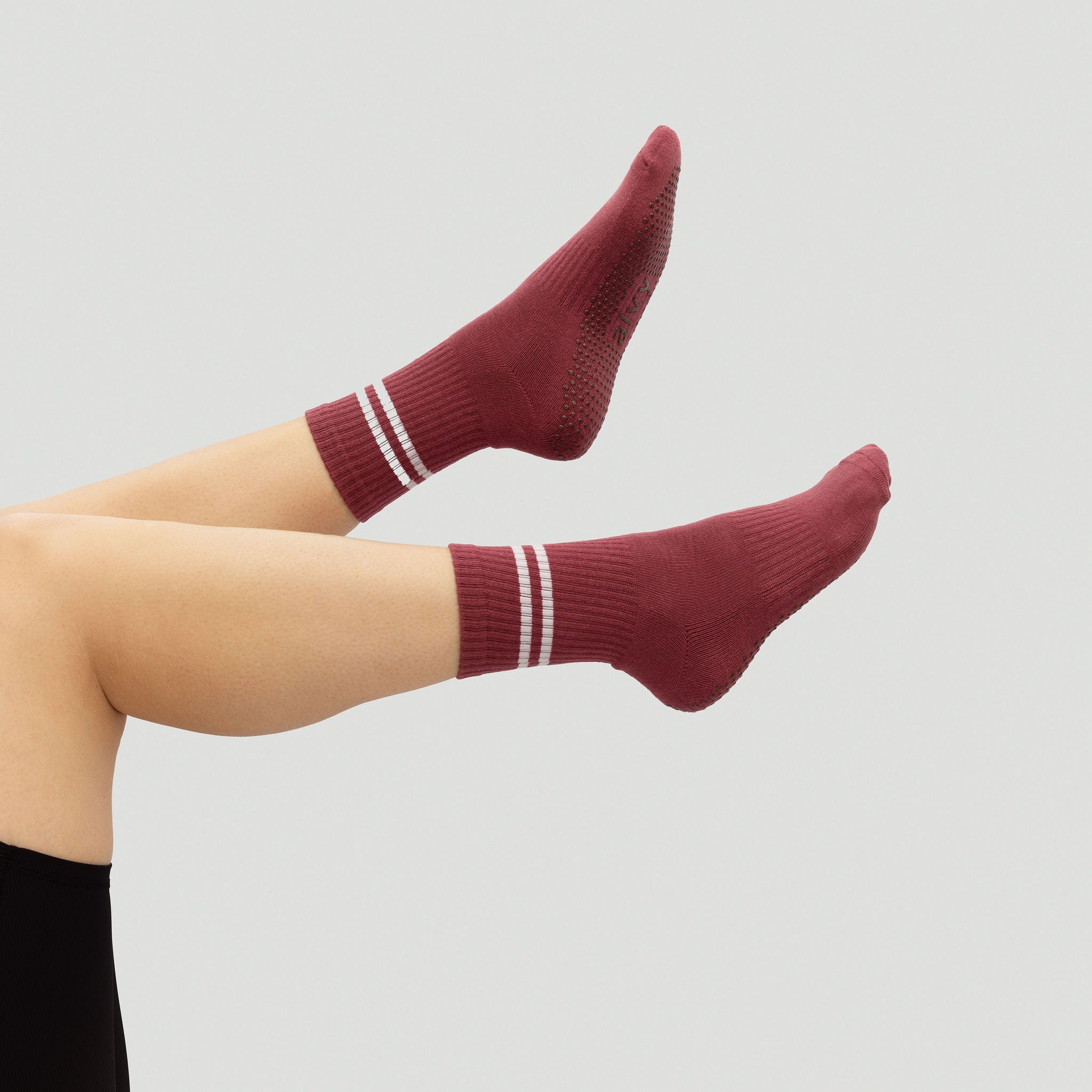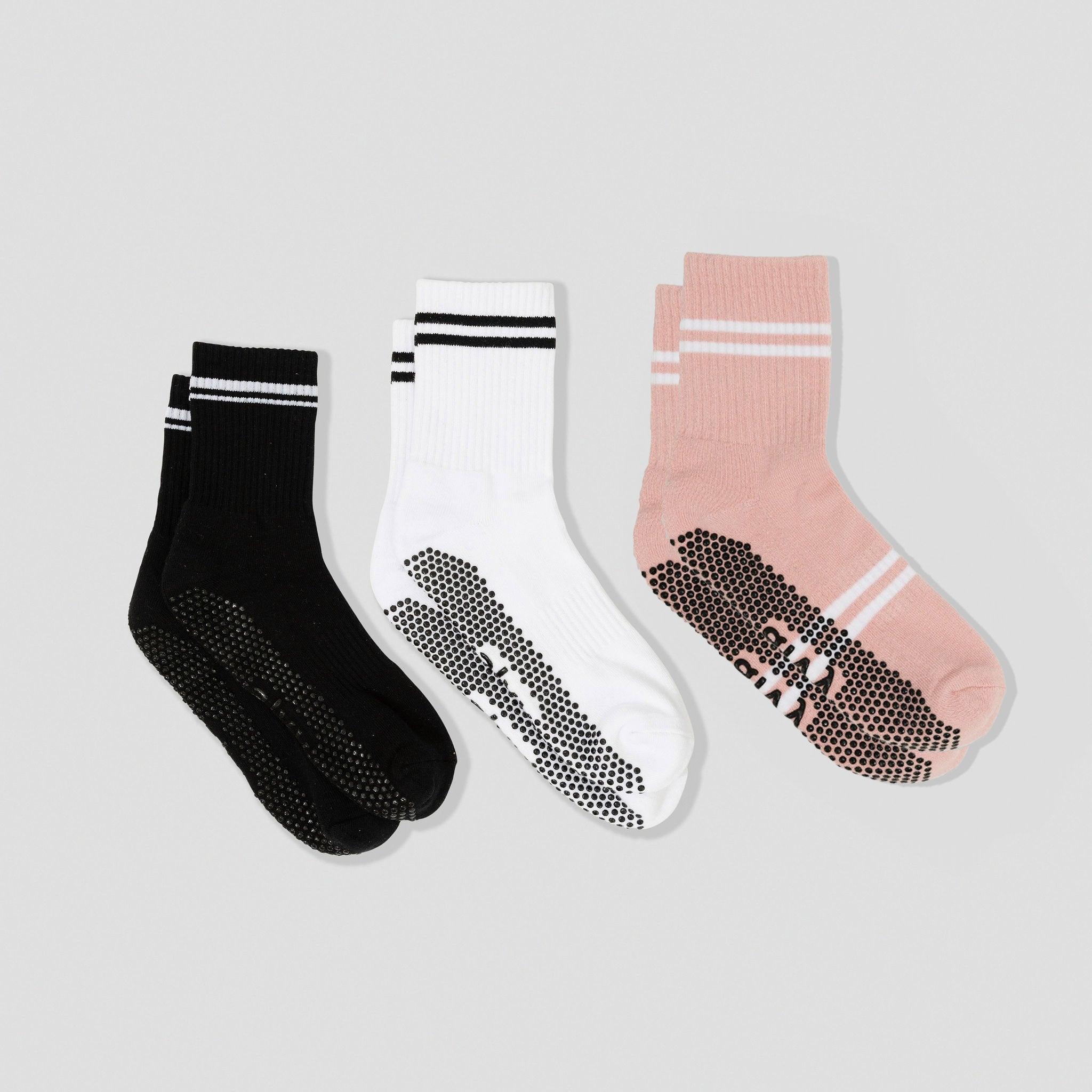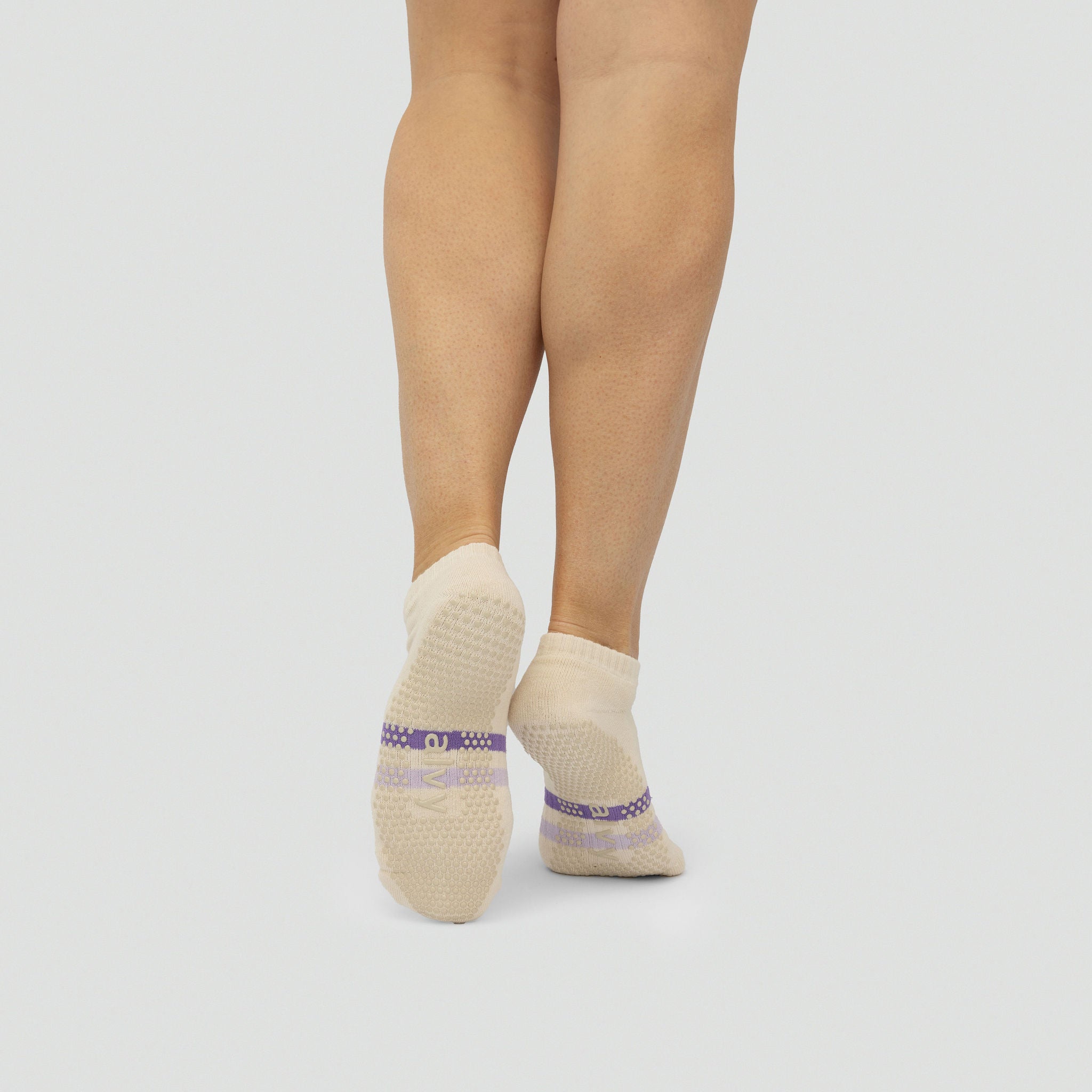With the cost of studio Pilates classes, home workouts can be an enticing prospect. A studio setting will give you the guidance and accountability that is needed for the best results. However, in this article, we give you some ideas of how you can perform Pilates at home and handy tips on how to do it.
Key Takeaways:
- Mat and wall Pilates are popular and effective forms that can be performed in the home.
- A mat and a good pair of Pilates socks are the bare minimum for Pilates at home.
- A Pilates app to guide home workouts will be cheaper than attending studio classes.
- A lack of motivation is a significant risk for home workouts, but there are ways to avoid this.
Yes, Can You Do Pilates At Home
Pilates can be practised at home with the appropriate guidance and equipment, and it can be just as effective as sessions in a studio. Numerous resources are available for individuals, whether beginners or experienced practitioners, to aid them in commencing and advancing in their Pilates journey from the convenience of their homes. These resources include YouTube Pilates classes, video tutorials, Pilates apps, and books, providing many options.
Pilates That Are Ideal For The Home
An essential aspect of Pilates is its emphasis on well-controlled movements and proper form. Two of the more popular forms that can be done at home are mat and wall Pilates.
Mat Pilates is similar to yoga. Instead of a reformer machine, it is performed on the floor using a mat for support and cushioning. It involves a series of controlled movements and exercises designed to improve flexibility, strength, balance, and overall body awareness. Mat Pilates relies primarily on body weight and gravity to provide resistance.
Wall Pilates can also be a great workout. It offers a welcome alternative to mat Pilates and uses the same principles of using body weight for resistance.
Advantages of Home Pilates
- You can do it anytime despite having a busy schedule and certainly don’t need to get in the car and drive to a studio.
- You will save money on studio fees and expensive equipment. For more information, read our article on the cost of studio Pilates.
- Enjoy the comfort and privacy of your home.
- You can tailor your workout to your specific needs and goals.
Disadvantages of Home Pilates
- No instructor will correct your form or provide immediate feedback.
- Home environments may have more distractions than a dedicated studio space.
- It might be more challenging to stay motivated without the structure and community of a class.
- Only some have a spacious area for exercising.
What You Need To Start Pilates At Home
Starting Pilates at home doesn't require much equipment, but a few essentials and nice-to-haves can enhance your practice.
- Grip socks. A good pair of crew Pilates socks will make a difference, giving you added stability during certain exercises. Simply put, these are a must-have item, as New Idea and Who agree.
- Mat. A good-quality Pilates mat is essential for cushioning and support. Look for a thicker-than-standard yoga mat to protect your spine and joints during floor exercises.
- A Pilates app. Investing in a subscription to a top Pilates app will provide you with a wealth of routines to choose from, rather than making it yourself or searching online for them.
- Comfortable clothing. If you're taking an online class, wear comfortable, form-fitting clothes that allow you to move freely and let your instructor see your form.
- Resistance bands. These are great for adding resistance to your exercises without needing bulky equipment.
- Pilates ring. Also known as a magic circle, this is useful for adding resistance and helping with alignment.
- Small hand weights. Light weights can increase the intensity of your workouts.
- Stability ball. A stability ball can be used for various exercises challenging your balance and core strength.
- Foam roller. Great for releasing muscle tension and enhancing flexibility.
10 Pilates Exercises You Can Do At Home
Here are ten effective Pilates exercises you can easily do at home, whether a beginner or more advanced. All of these exercises will tone and strengthen your muscles.
The hundred.
Lie on your back with your legs in a tabletop position. Lift your head, neck, and shoulders off the mat, extend your arms, and pump them up and down while breathing in and out for a count of 100.
Roll-Up
Lie flat on your back with your arms extended overhead. Slowly roll up to a seated position, reaching for your toes, and then roll back down one vertebra at a time.
Single-Leg Stretch
Lie on your back with your legs in a tabletop position. Bring one knee toward your chest while extending the other leg out, alternating legs in a scissoring motion.
Double-Leg Stretch
Like the single-leg stretch, extend both legs out and bring them back together.
Scissors
Lie on your back with your legs extended toward the ceiling. Lower one leg toward the mat while keeping the other extended upward, then switch legs in a scissoring motion.
Criss-Cross
Lie on your back with your legs in a tabletop position. Lift your head, neck, and shoulders off the mat, twist your torso to bring one elbow toward the opposite knee while extending the other leg out, and switch sides.
Leg Circles
Lie on your back with one leg extended toward the ceiling and the other flat on the mat. Make small circles with the extended leg, then reverse direction and repeat on the other side.
Plank
Start in a push-up position with your hands directly under your shoulders. Hold your body straight from head to heels, engaging your core.
Side Plank
From a plank position, shift your weight to one hand and rotate your body to the side, stacking your feet. Hold your body in a straight line from head to heels.
Swan
Lie face down with your arms extended in front of you. Lift your head, chest, and arms off the mat while keeping your lower body grounded, then lower back down.
How To Get The Most Out Of Home Pilates
Two of the biggest hazards to your home Pilates workout are laziness and motivation. Remember these tips for getting the most out of your home Pilates practice.
Schedule in the time ahead
Establishing a consistent schedule for your Pilates sessions is key. This not only ensures optimal results but also keeps you accountable.
Try to have your sessions simultaneously each day to develop a routine. Whether in the morning for a lively start to your day or in the evening to unwind, find a suitable time and stick to it.
This will help you remain dedicated and make Pilates a regular part of your daily life.
Set aside a dedicated area
Allocate a specific area in your home for Pilates to enhance your practice. Select a quiet, organised space where you can move without disturbances. Ensure it's well-lit and has enough space for you to comfortably perform all your Pilates exercises.
Personalise this area with items that inspire and motivate you, such as a yoga mat, small plants, or inspirational Pilates quotes. You could even have a basket nearby where you can store your mat and accessories.
Warm-up
Always commence your Pilates session with a warm-up to prepare your muscles, joints, and especially your spine. This may involve gentle stretching and movements to gradually elevate your heart rate.
Similarly, conclude each session with a cool-down to aid muscle recovery and reduce soreness. Include stretches targeting the areas you've worked on to boost flexibility and prevent stiffness.
Listen to your body
Be attentive to how your body feels during each exercise. If you experience any pain or discomfort, cease immediately and check your form.
Be cautious not to overexert yourself, especially if you're new to Pilates. One of the most important aspects of Pilates is to do it at your own pace. So, adjust exercises as necessary (to make them easier or more challenging) and progress at your own pace. Pilates revolves around controlled, mindful movements, so concentrate on quality rather than quantity.
Change it up to keep it interesting
Diversify your workouts to prevent monotony and stay motivated. Lack of motivation is one of the key reasons people stop working out at home.
Experiment with different Pilates exercises and routines to target distinct muscle groups. If you have access to props like resistance bands, a Pilates ring, or a stability ball, incorporate both mat and equipment-based exercises. Exploring different styles and techniques can also help you encounter new challenges and enhancements.
Stay hydrated
Stay hydrated by consuming ample water prior to, during, and after your workouts to sustain top performance and recovery. Hydration supports muscle function, aids in preventing cramps, and contributes to overall bodily health. Keep a water bottle nearby during your Pilates sessions and take small sips throughout to stay adequately hydrated.
Monitor your progress
Monitor your progress by maintaining a workout journal and documenting any improvements. Record the exercises you completed, the duration of your sessions, and how you felt during and after.
Track any enhancements in strength, flexibility, or endurance over time. Record-keeping can help you observe your progress clearly and inspire you to continue your practice.










